PLACEPALAYAM
Tuesday, February 21, 2012
Thursday, November 3, 2011
Enter Gudiyam Caves... Found the Cavemen!
Enter Gudiyam Caves... Found the Cavemen!
Get outta Town!*
Chennai is a concrete jungle! People here have monotonously robotic lives. Deadline has become the lifestyle. Citizens from different corners ensure keeping themselves busy. Everyone enjoys working against the clock! Stress levels are on the rise at an alarming rate! Thinking of future, everyone forgets nature. Those who think of nature do not have the time to stop and admire. Sounds familiar, isn't it?
These are just myths spreading spuriously like cancerous cells. Like many big cities around the world, Chennai too has beautiful patches of lush green jungle amidst and around these towering corporates. A little patience and perseverance will soothe the mind, body and soul.
Adventure to the Caves
One such place is just about 2 hours away from Chennai. At 12 kilometers away from Poondi reservoir lies the serene beauty of this location that has caves and is called as Gudiyam caves (to be read as goodiyam caves - கூடியம் குகைகள்). This is a tiny hamlet which can be easily reachable via road.
reservoir lies the serene beauty of this location that has caves and is called as Gudiyam caves (to be read as goodiyam caves - கூடியம் குகைகள்). This is a tiny hamlet which can be easily reachable via road.
 reservoir lies the serene beauty of this location that has caves and is called as Gudiyam caves (to be read as goodiyam caves - கூடியம் குகைகள்). This is a tiny hamlet which can be easily reachable via road.
reservoir lies the serene beauty of this location that has caves and is called as Gudiyam caves (to be read as goodiyam caves - கூடியம் குகைகள்). This is a tiny hamlet which can be easily reachable via road.Poondi is a small village near Tiruvallur, is situated at a distance about 60 km in north of Chennai. Frequent buses are available from Chennai and Tiruvallur to reach this place.
The auspicious date, December 12, 2009, was chosen for a trip to venture to Gudiyam caves. I still doubt that whether the date was auspicious enough, as there were these TV channels and online news websites howling on top of their throats forecasting thunderstorms. The met department knew little that that day is going to be picked for heart-filling trekking experience.
Trekking is Teamwork
Samudiram (Sam, his nick being Creative Sam) started to browse through the websites to find a good location to trek. Jagadeesh (Jag) joined Sam in finding out the location. Actually, what he was doing unwittingly was to throw in more options eventually causing more confusions. They pulled me (Raj) in. A wildlife enthusiast by nature, never ventured in trekking sprees. These three caballeros squeezed ideas from their brains, using whatever their IT workload left as gray matter in their cranial casings. Finally, the location was fixed as Gudiyam caves.
 It needs five fingers to complete a forelimb. Likewise, it requires five friends to ensure the completeness in the fun trip. Suresh and Thiagarajan (Thiagu) joined their hands to complete the finger count.
It needs five fingers to complete a forelimb. Likewise, it requires five friends to ensure the completeness in the fun trip. Suresh and Thiagarajan (Thiagu) joined their hands to complete the finger count.Logos, Pathos and Ethos
These three golden words were uttered by the great Plato himself. He told the trio to be a guide for writing and speeches. I would add that these are essential even for trips, especially out of your city, out of your comfort zone.
These three golden words were uttered by the great Plato himself. He told the trio to be a guide for writing and speeches. I would add that these are essential even for trips, especially out of your city, out of your comfort zone.
Logos: The Latin word for Logic. Logistics was derived from this word. The logistics was decided. Sam's car will be our chariot that will suffice to reach and return. The glucose packets, water bottles, biscuit packets, thirst-quenching sweet orange candies were packed and we were all set to go. We also ensured out wit-machinery is intact and will be thoroughly functional throughout the trip.
The route to the place was not known to even one of the 5 great fellas. Google maps showed only dark green patches all over the area we were interested in. It dawned on us that there were no proper maps available. However the advantage is that who needs a map in India, when there are kind people everywhere to help you around! The only source of information was a blog in 2004 narrating the experiences of our forerunners having ventured into this very same spot. They have even clearly mentioned the hamlets one has to pass through to reach that place; or so we thought!
Pathos: Emotions. Everyone loved nature and the wilderness and were looking forward to some nice interactive walking experience with nature.
Ethos: Ethics of travel. Everyone to assemble by 4:45 am to Koyambedu bus terminus by their own travel means. Each one carries their bags, equipment and their wisdom leaving back their egos safe and secure locked in their closets. Time of departure was fixed at 5 am on Koyambedu.
We were so spoilt by the clockwork robot-like routine that we needed a deadline to return. The estimated time of return was 11 am.
Gliding to Gudiyam!
The plan was up. Everything seemed to be perfect. Thus came the day, 12-Dec-09. Everyone assembled at Koyambedu bus stand by 5 am. The bikes and car were parked and Sam's car, filled with trekking enthusiasts, roared its engine glided off by 5:05 am.
The plan was up. Everything seemed to be perfect. Thus came the day, 12-Dec-09. Everyone assembled at Koyambedu bus stand by 5 am. The bikes and car were parked and Sam's car, filled with trekking enthusiasts, roared its engine glided off by 5:05 am.
On a cloudy day with the cold breeze on our faces, we set off through Avadi towards Tiruvallur. After crossing Avadi, close to Pattabiram, we parked the car near a tea shop and parked the tea, coffee and light beverages inside our empty guts. To complete our inventory, some biscuit packets were bought along with couple of bottles of water. Nature's calls were also answered by watering the plants beside the highway with liquid fertilisers.
Just as sleeping baby, the sun wiped its sleepy eyes and started to throw rays of light at all directions.
Pitstop (Gut-stop!)
The next place where we stopped was "Akshaya Bhavan" a highway motel in Tiruvallur. It's available at the left side of the road (NH 205). The place is well maintained and they also start off early perhaps to cater to the needs of the adventurists and travelers alike. The place is well maintained and the food is also good to eat. There is a play area for the kids with swings and slides. Nice pitstop for one and all.
We filled ourselves with Idlies and Vadas immersed with chutneys and sambar. The items were topped with coffee and tea. However, we made sure not to be too full as we were looking forward for the trek.
Poondi Reservoir and Furthermore
By taking the right turn after Akshaya Bhavan, the road led us straight to Poondi reservoir. Without taking any diversions, but a few turns and sharp bends, the well-laid road leads straight into the reservoir. We drove through the reservoir slowly enjoying the gentle breeze and the bird-life around the water body. Early morning visuals are eternal.
 The road leads to the bridge which is built on the top of the floodgates. To reach Gudiyum, we crossed the bridge and drove straight to where the road led us. After a few minutes of drive (probably after a kilometre or two), we were queried by a crossroad. To follow the right path, take right into the road leading to Nambakkam. The snaking roads lead to Nambakkam. Make sure not to take diversions and stick to the tar road, whcih is wide enough to allow two maxi cabs at the same time (one maxi cab should wheel some mud on one side for sure!)
The road leads to the bridge which is built on the top of the floodgates. To reach Gudiyum, we crossed the bridge and drove straight to where the road led us. After a few minutes of drive (probably after a kilometre or two), we were queried by a crossroad. To follow the right path, take right into the road leading to Nambakkam. The snaking roads lead to Nambakkam. Make sure not to take diversions and stick to the tar road, whcih is wide enough to allow two maxi cabs at the same time (one maxi cab should wheel some mud on one side for sure!)Shootout in Nambakkam
The road leading to Nambakkam and Goonipalayam were collared by large green fields filled with bird-life in the farmlands and on the electric cables. Now that our stomachs were filled, we readied ourselves to fill the stomachs of our cameras with the snaps. We halted the car, ventured into the fields, ensuring not to stomp on the grains and plants to satisfy our photographical hunger.
 Birdlife in these areas included drongos, little hawks, bulbuls, sparrows, crows (the crows in these areas are fat and strong!), crow pheasant, terns, mynahs, cranes, egrets, storks (painted and open bills), herons, little cormorants, paradise flycatchers and a few beeeaters. Also we bumped into a few cobwebs holding the mist like a mother holds her child. There were a few frogs hopping around cursing our presence. There were spiders and grasshoppers to fulfil the macro-life. Not to forget the amount of beautiful butterflies fluttering by. We also noticed a water beetle and few waterstriders rowing in the irrigated stagnant water around the crops. After some photographic moments, we decided to go to the location of our prime interest.
Birdlife in these areas included drongos, little hawks, bulbuls, sparrows, crows (the crows in these areas are fat and strong!), crow pheasant, terns, mynahs, cranes, egrets, storks (painted and open bills), herons, little cormorants, paradise flycatchers and a few beeeaters. Also we bumped into a few cobwebs holding the mist like a mother holds her child. There were a few frogs hopping around cursing our presence. There were spiders and grasshoppers to fulfil the macro-life. Not to forget the amount of beautiful butterflies fluttering by. We also noticed a water beetle and few waterstriders rowing in the irrigated stagnant water around the crops. After some photographic moments, we decided to go to the location of our prime interest.Pondering the Pattis (பட்டிகளைச்சுற்றிப்பார்தோம்)
 After Nambakkam, our trustworthy(!) route-guide mentioned about Nambakkam; Gooni Palayam (கூனி பாளையம்); Seettancheri; Right Diversion (Gudiyam). Following this map we took many right turns (not quite right!) and ventured to Gooni Palayam, Seettancheri and even crossed Seettancheri. We were constanly inquiring the locals as much as we could and kept moving forward.
After Nambakkam, our trustworthy(!) route-guide mentioned about Nambakkam; Gooni Palayam (கூனி பாளையம்); Seettancheri; Right Diversion (Gudiyam). Following this map we took many right turns (not quite right!) and ventured to Gooni Palayam, Seettancheri and even crossed Seettancheri. We were constanly inquiring the locals as much as we could and kept moving forward.Then came the shock when we stumbled upon on a crossroad with the direction pointers. We were taken aback to read the directions which were like this: Take left to reach Oothukkottai (ஊத்துக்கோட்டை) and take right to reach Thiruvallur (the place where we started the adventure). One was quick to comment "Guys, now that we've seen all pattis, let's go back to our pattinam (city)!".
Gudiyum Village, Here we come!
 Then we decided to track back our footprints (rather tire-prints). Then we stopped wherever we saw diversions, first near Seettancheri, but no result. Then we went back till Gooni Palayam and took the turn which we did not take earlier. There a excessively friendly locals guided us the right path. We realised that we had out-ventured at least a dozen kilometers more.
Then we decided to track back our footprints (rather tire-prints). Then we stopped wherever we saw diversions, first near Seettancheri, but no result. Then we went back till Gooni Palayam and took the turn which we did not take earlier. There a excessively friendly locals guided us the right path. We realised that we had out-ventured at least a dozen kilometers more.The right route is as follows:
1. Reach the Poondi Reservoir bridge.
2. Take the straight road till the signboard showing the right arrow to Nambakkam.
3. Take the road leading to the right hand side and take the road to Nambakkam.
4. Cross Nambakkam and continue journey till Gooni Palayam is reached.
5. The roads split into two ways exactly after 10 km journey from the Poondi bridge. The path on the right is not the right way and is best to be left out. The path on the left is the right path to be taken.
6. Take left turn and drive about 2 kilometers in the weather beaten tar road.
7. After 2 kilometers of almost bumpy journey, on to the right side of the road, there will be a huge notice board (about 3 feet tall and 4 feet wide), which has a torn flex paper. The other side of the signboard is still intact and has the route to Gudium Caves.
8. Once you see the signboard, take right turn on the pebble filled road. Sam was thoughtful to shift the gear to second gear and took off his foot off all the pedals.
9. About one kilometer of really bumpy journey and then we reached the Gudiyum village.
Boy Escorts! Lead the Way!
 On reaching the location we met two local boys, who were shy were reluctant to guide us to the caves. With little persuasion from their kind mother, they agreed to guide us to the caves. Madhan the elder brother studying 9th standard (in a school that is 5 km away from Gudiyum) accompanied with Madhu the younger one studying 8th standard joined us as guides. We ordered for nice village lunch in their home, as we knew that the 10-odd km trek would fire up our gluttonous hunger; and who would say no to a tasty village meal, which is kind of rarity for city-dwellers.
On reaching the location we met two local boys, who were shy were reluctant to guide us to the caves. With little persuasion from their kind mother, they agreed to guide us to the caves. Madhan the elder brother studying 9th standard (in a school that is 5 km away from Gudiyum) accompanied with Madhu the younger one studying 8th standard joined us as guides. We ordered for nice village lunch in their home, as we knew that the 10-odd km trek would fire up our gluttonous hunger; and who would say no to a tasty village meal, which is kind of rarity for city-dwellers.Thus started the 5 km long trek. It is a lonesome place belonging to the forest department. Therefore it is advisable to bring along the necessary provisions.
The provisions should be packed keeping in mind that the venturing area is remote and help will not arrive soon and therefore must include:
1) Enough water bottles (there is no water source in the area and the only pool
available also is not potable),
2) Glucose packets (to cater to the dipping energy) would be required especially on a hot day,
3) Chocolates and candies to quench the thirst while walking and reduce drinking stops,
4) Biscuits and choco-bars, which can be eaten leisurely while resting in the caves and on the rocks,
5) First-aid kit containing little amount of cotton, Dettol, ache balms (especially for the muscular sprains), pain relieving spray, bandaids and a pair of scissors.
Peeking into the Past
There are many large pebbles bearing white arrows indicating the path to the caves. However, one has to have a sharp eye to capture them.
 On the way, we observed many stones used by the paleolithic people. One is able to view the different sharp stones and pebbles which were used as tools by our forebearers long time ago.
On the way, we observed many stones used by the paleolithic people. One is able to view the different sharp stones and pebbles which were used as tools by our forebearers long time ago. We were shown a bunch of long leaved grass which smelled awesome when rubbed between our palms. The smell stayed with us for very long. For the noses stung badly by the artificial perfumeries, this was an excellent way to unwind. There are eucalyptus trees in both banks of the path. Since we could not afford a botanist, could not pick the nomenclature of the flora that we observed there. And who needs the names to admire the beauty of the trees.
There was a place where a tiny pathway led underground (as shown in the picture above). Madhu told that it is another cave but can be accessed only on crouching, crawling and slithering through. He also mentioned that sadhus and swamiyars who were living here used to venture into these crevices and do meditation. Not wanting to explore into the caves and not wanting to become a sanyasi, we took a few snaps of the cave's mouth and moved on.Word of Caution: Never venture into these caves because there could be snakes, bats, poisonous insects and poisonous gases in the cave.
First Cave
After crossing almost 4 km, shooting the wildlife (flora and fauna - insects like caterpillars, millipedes, butterflies, dragonflies and the colourful beetles; birds and a few humans - us), and teasing each other  displaying our wit and possible wisdom, we landed near a thicket with enough room to allow one fat person to move through freely. We saw to our right having hill formations that looked like the lateral view of an elephant (check out the first photo in this blog).
displaying our wit and possible wisdom, we landed near a thicket with enough room to allow one fat person to move through freely. We saw to our right having hill formations that looked like the lateral view of an elephant (check out the first photo in this blog).
 displaying our wit and possible wisdom, we landed near a thicket with enough room to allow one fat person to move through freely. We saw to our right having hill formations that looked like the lateral view of an elephant (check out the first photo in this blog).
displaying our wit and possible wisdom, we landed near a thicket with enough room to allow one fat person to move through freely. We saw to our right having hill formations that looked like the lateral view of an elephant (check out the first photo in this blog).After drinking in the beauty of the natural elephant rock formations, we moved into the thicket wondering what kind of wild creatures we may trod upon, we reached the first cave. What an awesome sight!
The place is full invisible air - clean, fresh, unpolluted (reminded me of what the Admiral of the nuclear submarine said in the movie 'Crimson Tide'!). One can feel the air filling the lungs (just as we can feel the first drink of hot water entering our guts early in chilly mornings). The pure air does not just fill the lungs, but fill the hearts with peace at ease. It also lifts the spirits and generates positive energy. I know nothing about vaasthu and feng shui, except their names, but I realised that the best direction is always the one pointing towards raw virgin nature untouched or rarely touched by man. Untouchability is a sin, crime and what not; but I advise untouchability towards nature as man's touch has always proven disastrous for the natures intricate balance.
 There are many beehives in the rock creeks and crevices. There are both active brown hives buzzing with bees and abandoned white colour hives. The floor was littered with a few white abandoned hives which was still bearing the sweet smell of honey.
There are many beehives in the rock creeks and crevices. There are both active brown hives buzzing with bees and abandoned white colour hives. The floor was littered with a few white abandoned hives which was still bearing the sweet smell of honey.Remember to be quiet and speak in low voice. Need not whisper, but voice should be as low as possible in order not to disturb the bee colonies. If stung, proper medical aid is available only beyond many kilometers walk and a few kilometers drive.
We wondered that who would reside with these bees in the caves. Pat came the answer. The screeching of the parakeets made our heads turn and there were parakeet colony and we also noted a few babblers, mynahs and drongoes in the vicinity. This showed the altruistic behaviour between animals.
The ceiling of the caves are littered with the broken mud nests of wasps and hornets. Most of the nests are abandoned, maybe because it is not the nesting season for them.
The cave had an Amman statue with the trident, along with lots of baked-mud horse dolls. It also had a bell for ringing. As educated by our boy escorts, this is their place of worship for the locals. We wondered how the ceremonies could happen peacefully in the presence of the bees!
 Jag, Sam, Suresh and Thiagu invested some time shooting in and around the cave. I climbed the boulders in the cave with Madhu and sat down and meditated for a while consuming the real wild beauty as much as possible. Also posed for a few snaps (it is good not to have a camera as you can be in front of the lens and not behind it). Check out one snap on the left where I try to fly like a bird under the ceiling filled with hornet and wasp nests.
Jag, Sam, Suresh and Thiagu invested some time shooting in and around the cave. I climbed the boulders in the cave with Madhu and sat down and meditated for a while consuming the real wild beauty as much as possible. Also posed for a few snaps (it is good not to have a camera as you can be in front of the lens and not behind it). Check out one snap on the left where I try to fly like a bird under the ceiling filled with hornet and wasp nests.Second Cave
After spending some time in the first cave, we moved on to the next cave. The second cave is there after we retraced our footsteps almost half way back to Gudium village. This cave is one nice challenge for heavily built people, as it was little steep, but the stones in the path had stones which looked like steps. Could be the efforts of our paleolithic cavemen.
After spending some time in the first cave, we moved on to the next cave. The second cave is there after we retraced our footsteps almost half way back to Gudium village. This cave is one nice challenge for heavily built people, as it was little steep, but the stones in the path had stones which looked like steps. Could be the efforts of our paleolithic cavemen.
This cave is safe void of the beehives. However, we found a few tiny frogs and toads as well as snake's peeled skin. It should be a water snake, probably one of the keelbacks. So, it is evident that the area has snakes. There is a tiny pond in the top of the cave indicating more proofs for the presence of a water-based ecosystem.
After having snacks (biscuits, chips, moongi dhal and glucose) inside the cave, we ventured to climb on top of the cave and got down on the other side. The view from top of the cave's mouth was awesome and describing the feeling in words would be demeaning the experience.
View from top of the second cave. Note the rock formation similar to elephant heads.
Thus we enjoyed the gloomy day in and on the caves and walked back teasing each other with the little amount of energy left in each of us. All through the trip, we ensured not to leave any trails of our travel. Also made sure not to leave back any litter right from polythene papers, wafers or even the biscuit covers or water bottles.
Lunch and Back to Pavilion
As we were reaching the hut, the met department's words came true and clouds opened their arms to release a light drizzle. We entered Madhu/Madhan's huts jogging and readied ourselves looking forward to a splendid meal. The food was really good and we gobbled it after a very good nature trek. Somebody commented 'Any food is very good for a tired tummy'. Jokes apart, the food was spicy and good and we relished it.
As we were reaching the hut, the met department's words came true and clouds opened their arms to release a light drizzle. We entered Madhu/Madhan's huts jogging and readied ourselves looking forward to a splendid meal. The food was really good and we gobbled it after a very good nature trek. Somebody commented 'Any food is very good for a tired tummy'. Jokes apart, the food was spicy and good and we relished it.
We exchanged pleasantries and left the place with hearts full of joy and minds full of high morale discussing the day and the next trekking plan. On the way back to Chennai, we halted in Poondi reservoir, enjoyed the cool breeze that swept along. In the car, we started to admire the souvenirs from the caves trip - the photos.
We reached by 3:30 pm (refer the expected time of arrival earlier in this post) and parted our ways to our respective homes. That night we slept so well dreaming to be like the paleolithic cavemen.
GUDIYAM CAVES
GUDIYAM CAVES
This name is familiar to archaeological department of Tamilnadu. This place is in thiruvallur district. Is from Chennai approximately 70 km. Is in poondi panchayat union, Timmaboopalapuram panchayat.
Gudiyam Caves is known for its 1 lakh year old rock-shelters, statues etc. Preferred for trekkers and who loves to travel.
History: Caves have been used by humans for a long time and for a number of reasons. For many they provided shelter, for others they were a source for minerals and economic prosperity. The first mentions of karst landscape date back to the ancient Assyrian King Salmanassar III. As reported on bronze engravings, he was investigating the caves and springs at the source of the Tigris River. There are also mentions of karst topography in the writings of the ancient Greek and Romans (Jennings, 1971). In Israel there is a cave called the Cave of Letters and inside this cave documents from the second century C.E. describing in detail one woman’s life were found. The woman was named Babatha and it is thought that she used the cave for protection and to store her documents for safekeeping (Tyson, 2004).
Gudiyam Caves is known for its 1 lakh year old rock-shelters, statues etc. Preferred for trekkers and who loves to travel.
History: Caves have been used by humans for a long time and for a number of reasons. For many they provided shelter, for others they were a source for minerals and economic prosperity. The first mentions of karst landscape date back to the ancient Assyrian King Salmanassar III. As reported on bronze engravings, he was investigating the caves and springs at the source of the Tigris River. There are also mentions of karst topography in the writings of the ancient Greek and Romans (Jennings, 1971). In Israel there is a cave called the Cave of Letters and inside this cave documents from the second century C.E. describing in detail one woman’s life were found. The woman was named Babatha and it is thought that she used the cave for protection and to store her documents for safekeeping (Tyson, 2004).
Many historians and archeologists also come here to see the natural Gudiyam Caves in Chennai.
The prehistoric tools, rugged tracks and statues made with stones have the major tourist attractions in Chennai. Most of the weapons are supposed to be seen in the cave these weapons are used in ancient times.
The sculptures of the goddesses are believed to be the unique assets for the caves. The caves are having great appeal. Some attractions of ancient times can be found in the Gudiyam Caves as it gave many tourist attractions in Chennai.
Bird species and trees on the rocky hills have the great attractions in Chennai. The Gudiyam Caves is 90 kilometers away from Chennai. It is located near village of Gudiyam. Near the Gudiyam you will get lots of forests with green and flawless trees and bushes.
In the year 1863, the British Geologist Robert Bruce discovered the stone tool like hand axes this also gave Chennai tourist attractions. Most of the things are related to Paleolithic Age.
The Village of Gudiyam is situated 11 kilometers away from Poondi. The road between the Poondi and Gudiyam is not very good. However, one can travel. Most of the visitors come here to see these old caves. Truly, it gave Chennai tourist attractions.
The adventures start when the local village comes near. First cave is at the distance of 4 kilometers. The route has pebbles. You may have many photos during the visit of Gudiyam Caves.
Getting down from the hills is not an easy task people and people take precautions while getting down from the hills. From top of the hills, you can have the outstanding view of the cave as a tribute of nature.

The Gudiyam Caves are located at a distance of 17 km from the Poondi Reservoir, which is a prime landmark of Chennai city. Trekkers need to cover a distance of 4 km to reach the caves. The caves are visited by large number of tourists coming from all over India and many parts of the world.
Gudiyam Caves are situated in one of the prime locations of Chennai city. The caves are famous for the 16 rock shelters and the stone sculpture of Goddess Banachiamman. Gudiyam Caves of Chennai city are situated behind the Poondi Reservoir. Being one of the popular Chennai attractions, the caves are visited by huge number of tourists, archeologists and historians. The rugged tracks, tools of pre-historic ages, statues of stone and various bird species are the main attractions of the Gudiyam Caves.
It wasn’t until the 17 th century, when scientific societies began to emerge that books devoted to karst started to appear. The earliest work was written in 1654 by a Parisian by the name of Jacques Gaffarel, however little of this text remains today (Jennings 1971). In the mid to late 19th century Vienna, Austria was the center for scientific study and karst was a hot topic. This area was the hub for karst study because there were karst areas, primarily the Dinaric karst, around Vienna which fueled research and discussion (Herak and Stringfield, 1972). In the late 19 th century Edouard Martel, with his extensive investigation into karst landscapes, however brought France to the front in karst study with Austria where it has remained since (Jennings, 1971). The following quote from Martel’s first work Les Cevennes published in 1888 speaks of the caves he examined in France, Here are natural wonders of inconceivable beauty: Kilometre-long caverns, full of huge stalactites and stalagmites. Subterranean rivers and lakes in a shimmering bed of crystal. A dark and mysterious realm, which, cast in the eerie glow of the magnesium lamp, is transfigured into a magical palace. A fantastic spectacle, just waiting to be discovered (Martel, 1888). After World War I institutes devoted to karst and caves emerged along with the world’s first University Professor of speleology in Vienna, Georg Kyrle (Figure 3). After World War II interest is caves spread around the world and Europe was no longer the center for the study of speleology. After the study of karst landscapes was spread worldwide the International congresses of speleology held its first meeting in 1953. This has evolved into the International Union of Speleology which still operates and will hold the next congress in Athens, Greece in 2005. About an hour's drive south of Louisville is Mammoth Caves National Park with its vast array of tourist caves. But it is not alone, there are many other caves in the surrounding towns with their own unique perspectives. And especially for the kids, there are also amusement and wildlife parks and best of all, full-size dinosaurs at Dinosaur World. Mammoth Caves is the premier site of the area. Designated and protected as a national park in 1926, it was well-known long before that and contains much local history. Tours of the caves and area began in the mid-1800s and one can learn about its history and events that brought it renown. There are some fifteen different cave tours the sightseer can join. The tours vary from easy, well-guided trips to more difficult and rugged treks through the passages with only a lantern to show the way. The adventures can last from a half hour up to six hours. The Historic Tour gives the traveler a lesson about mining in the cave and a human history of the cave system, while other tours such as the Frozen Niagara Tour show off natural wonders: Onyx Colonnade, Golden Fleece, Rainbow Dome, Crystal Lake and more.
Specials:Gudiyam Caves in Chennai is a wonderful spot and has the prime location in Chennai city. There are sixteen rock shelters and stone having sculpture of Gods and Goddesses. Behind the Poondi Reservoir, the caves are located.
Gudiyam Caves in Chennai is one of the best tourist attractions in Chennai that is why the caves of Gudiyam are visited by the visitors and tourists every year in Chennai.
Gudiyam Caves
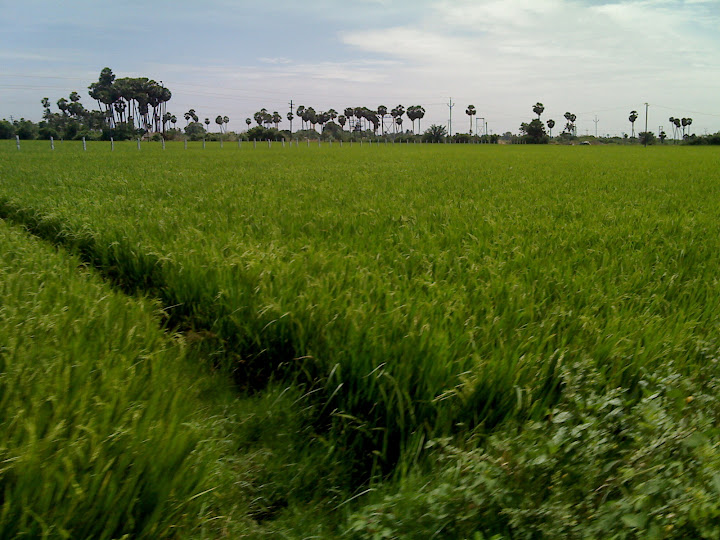
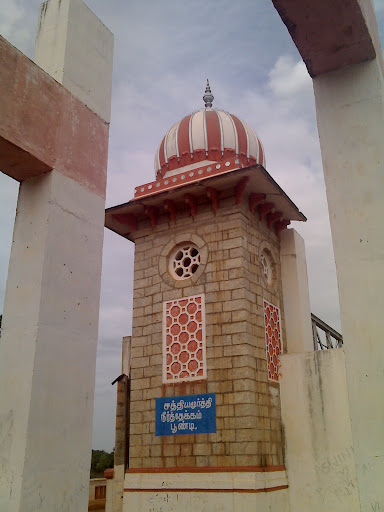
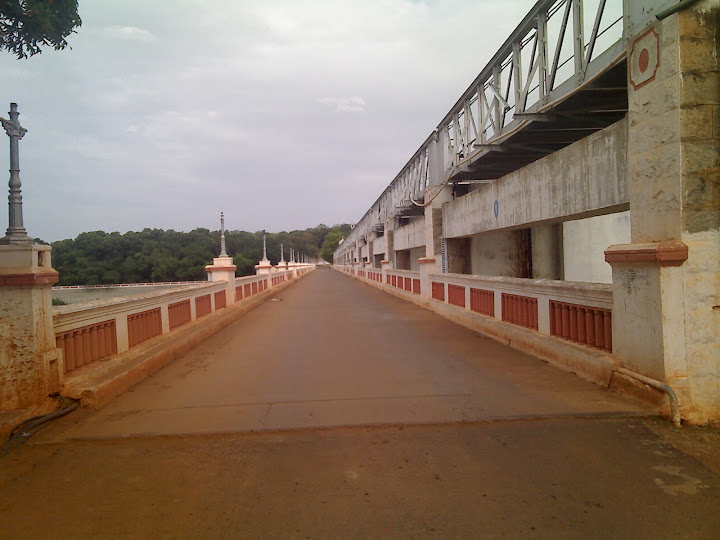
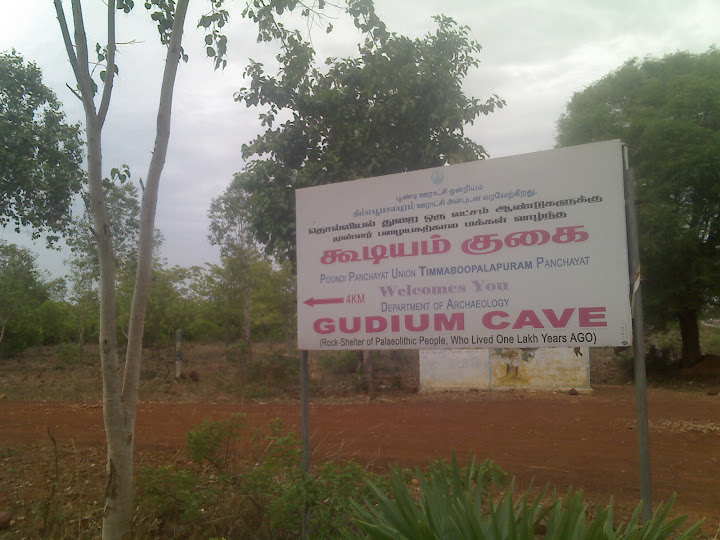

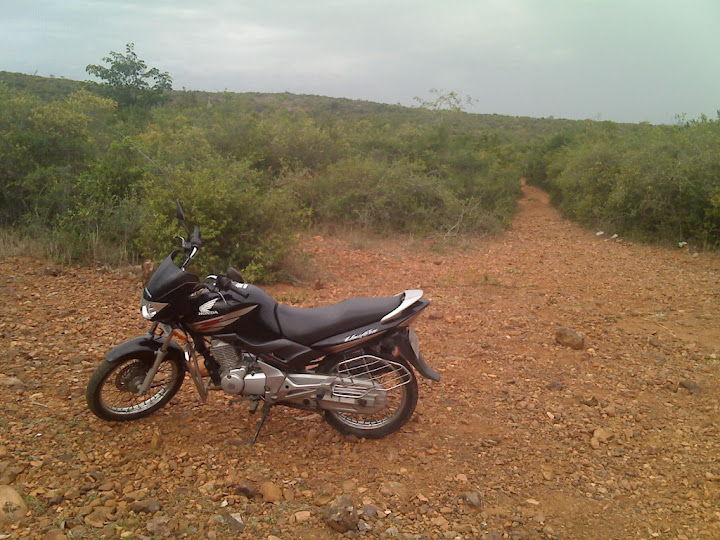


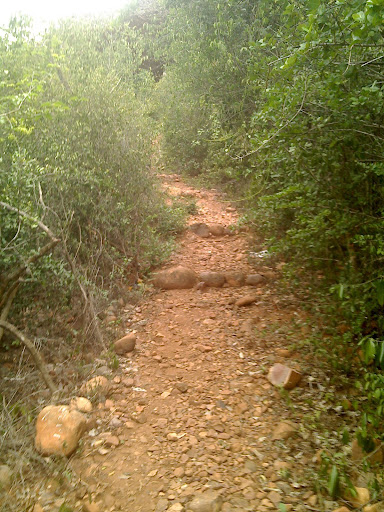
 Climbed yet to reach the top of the hill. Total surrounding was viewed at that point. It was awesome to spend time there with cool breeze.
Climbed yet to reach the top of the hill. Total surrounding was viewed at that point. It was awesome to spend time there with cool breeze.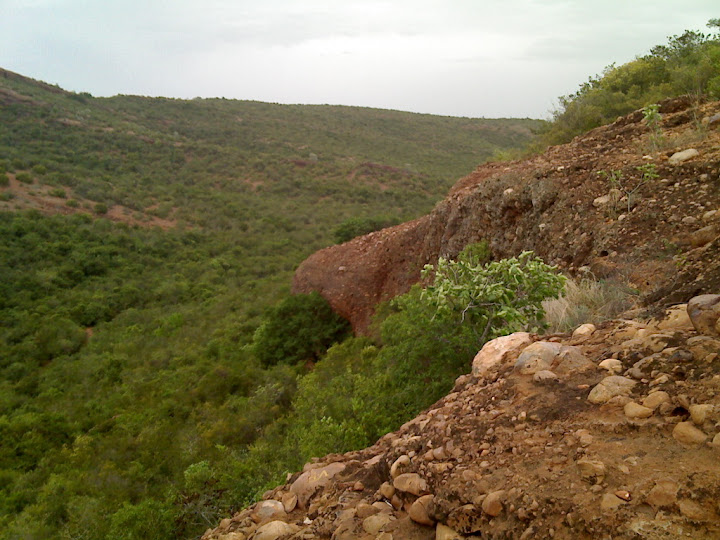
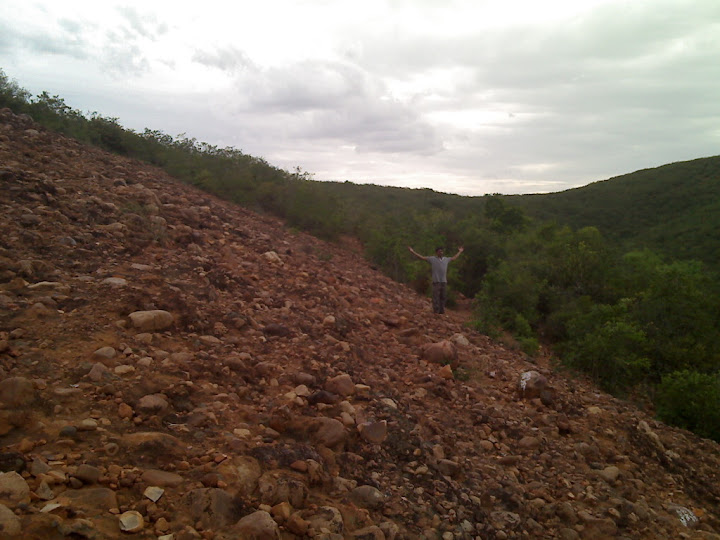
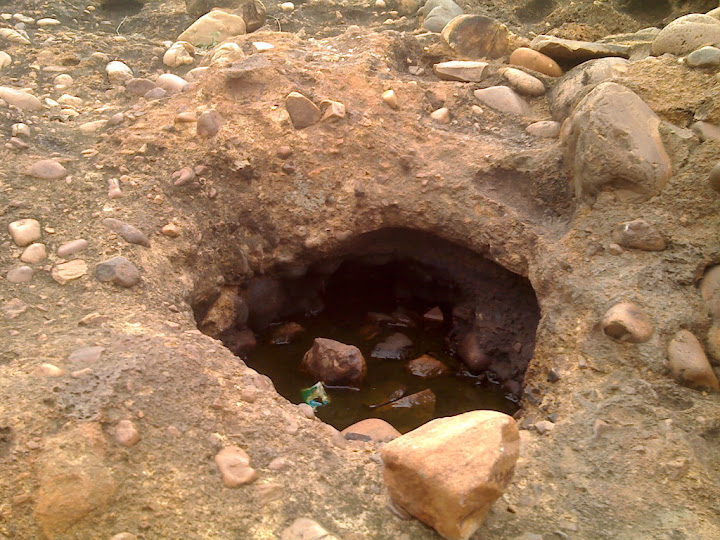
Gudiyam Caves
Gudiyam Caves
TAGS : PLACES
This is Located 70 km from Chennai which is located around Poondi.
Gudiyam Caves (75 kms) Situated 10 kms from the Poondi Reservoir at Alikuzhi Ghats, it is believed to be a pre-historic hominid habitation. There are about 16 rock shelters that are naturally formed like canopy-like structures in the reserved forests. It is the right kind of expedition for trekkers and nature-lovers.
The State Department of Archaeology has set up a museum near the Sathyamoorthy Sagar in Poondi exclusively for preserving the exhibits of pre-historic artefacts collected in and around Poondi areas, including the Allikuzhi ghat area.
Route
Drive down the Poonamallee Road -> then take the Tirutani Road -> head to Thiruvallur -> turn off to Poondi reservoir. Poondi-Gudiyam 15 kms. Palayam -> Seettancheri -> Pennalurpettai ->Right diversion(Gudiyam).
Gudiyam Caves (75 kms) Situated 10 kms from the Poondi Reservoir at Alikuzhi Ghats, it is believed to be a pre-historic hominid habitation. There are about 16 rock shelters that are naturally formed like canopy-like structures in the reserved forests. It is the right kind of expedition for trekkers and nature-lovers.
The State Department of Archaeology has set up a museum near the Sathyamoorthy Sagar in Poondi exclusively for preserving the exhibits of pre-historic artefacts collected in and around Poondi areas, including the Allikuzhi ghat area.
Route
Drive down the Poonamallee Road -> then take the Tirutani Road -> head to Thiruvallur -> turn off to Poondi reservoir. Poondi-Gudiyam 15 kms. Palayam -> Seettancheri -> Pennalurpettai ->Right diversion(Gudiyam).
Gudiyam Caves (A journey to the centre of the evolution.)
Gudiyam Caves
Gudiyam Caves
(A journey to the centre of the evolution.)
Prologue:
It all began with the moment when ‘matter’ combined with ‘spirit’ to give birth to the most complex species in the world both anatomically & psychologically... the humans.
Then started the ever going process of evolution, the other name for the phrase ‘Survival of the toughest ’.
One such link in this process was the ‘homo erectus’ and we, a bunch of nine
‘homo sapiens sapienses’ resolved upon going back in to the history of our existence to find out
how simple & basic lives our remote ancestors had.
(Another purpose was to get a break from our boring monotonous
lives & most importantly,utilize the weekend ;-))
Gudiyam ??? what’s that !
Gudiyam Caves, known by the village name situated @ the
foothills comprises of 16 natural
stone shelters which were used for dwelling nearly 100000 years
ago. It’s actually very surprising that in this age of
information technology,
very less information about this place is available. Reason…?
‘Actually very less information is available’! but as
they say ‘Himmat-e-marda to madad-e-Google ’ So after a
weeklong digging on the internet and courtesy people like
Mr. Chandra from R.E.A.C.H. foundation who gave us some
useful tips ,
we finalized Sunday ,the 5th of Oct.’08 for this adventure.And as the old saying goes... fortune favors the brave. The day started beautifully without any rain and remained cool till we reached the Gudiyam village.
foothills comprises of 16 natural
stone shelters which were used for dwelling nearly 100000 years
ago. It’s actually very surprising that in this age of
information technology,
very less information about this place is available. Reason…?
‘Actually very less information is available’! but as
they say ‘Himmat-e-marda to madad-e-Google ’ So after a
weeklong digging on the internet and courtesy people like
Mr. Chandra from R.E.A.C.H. foundation who gave us some
useful tips ,
we finalized Sunday ,the 5th of Oct.’08 for this adventure.And as the old saying goes... fortune favors the brave. The day started beautifully without any rain and remained cool till we reached the Gudiyam village.
After a lot of mails, messages & phone calls the count was finalized to be NINE! Eight Indians & a very jolly Chilean guest who works in the same company as I do. And the composition was 5 members in car & 4 on bikes. (It’s actually safe to go on bikes as well as cars and also advisable as you can enjoy the lush green terrain with sun playing hide n seek behind clouds, parking in the village which is at the foothills of the caves is also safe except for if you can excuse the mud wash by the curious village kids who are happy on some biscuits & junk stuff to keep a watch on your vehicles.)
Chale chalo…
So we kicked off our journey from IIT madras at 5.30 a.m. where we (myself Suyog & Vivek on bike) joined Prasad & Santosh in Santro(thanks to Prasad’s PR’s) later joined by Rohan-Jitendra @ kattipara Jn. On pulser & Abhimanyu & Patil at porur. Meanwhile we picked up raul our Chilean friend who awaited us @ office entrance patiently.
After the breakfast @ porur we halted again @ poondi for a break and some re-planning. As none of us had been there before we went slow & steady to reach our destination still well in time to be able to explore the place.
As none of us had been there before we went slow & steady to reach our destination still well in time to be able to explore the place. After some basic enquiries with villagers who helplessly tried to give us directions... we decided to trust our gut feelings (some arrow markings on stones are also helpful).one good thing about having less information is you don’t miss out on surprises.
After some basic enquiries with villagers who helplessly tried to give us directions... we decided to trust our gut feelings (some arrow markings on stones are also helpful).one good thing about having less information is you don’t miss out on surprises. With Some beautiful patterns & colorings on stones and the terrain fully rich of greenery, the place looked virgin. The sun was blazing but the trek was pleasant thanks to the breeze which brought a faint scent of eucalyptus.
With Some beautiful patterns & colorings on stones and the terrain fully rich of greenery, the place looked virgin. The sun was blazing but the trek was pleasant thanks to the breeze which brought a faint scent of eucalyptus.
 As none of us had been there before we went slow & steady to reach our destination still well in time to be able to explore the place.
As none of us had been there before we went slow & steady to reach our destination still well in time to be able to explore the place. After some basic enquiries with villagers who helplessly tried to give us directions... we decided to trust our gut feelings (some arrow markings on stones are also helpful).one good thing about having less information is you don’t miss out on surprises.
After some basic enquiries with villagers who helplessly tried to give us directions... we decided to trust our gut feelings (some arrow markings on stones are also helpful).one good thing about having less information is you don’t miss out on surprises. With Some beautiful patterns & colorings on stones and the terrain fully rich of greenery, the place looked virgin. The sun was blazing but the trek was pleasant thanks to the breeze which brought a faint scent of eucalyptus.
With Some beautiful patterns & colorings on stones and the terrain fully rich of greenery, the place looked virgin. The sun was blazing but the trek was pleasant thanks to the breeze which brought a faint scent of eucalyptus.After an hour long walking on rough & stony route we reached the first cave formed of porous stone.
If you climb a bit more you can spot the other caves from there. It requires another 2-3 km’s of walking to reach there through the thick veil of branches you will think twice before touching them to make your way through fearing your touch will spoil their purity & the wonderful envelope. Thus we reach the destination,
It requires another 2-3 km’s of walking to reach there through the thick veil of branches you will think twice before touching them to make your way through fearing your touch will spoil their purity & the wonderful envelope. Thus we reach the destination,

If you climb a bit more you can spot the other caves from there.
 It requires another 2-3 km’s of walking to reach there through the thick veil of branches you will think twice before touching them to make your way through fearing your touch will spoil their purity & the wonderful envelope. Thus we reach the destination,
It requires another 2-3 km’s of walking to reach there through the thick veil of branches you will think twice before touching them to make your way through fearing your touch will spoil their purity & the wonderful envelope. Thus we reach the destination,
The Amman Temple which has got nothing to do with the band of civilization of our interest (the hominids). Just take step back & look up @ ceiling I bet you will be awed at the sight of massive beehives clinging to the porous & damp roof of the cave.
Excuse the foul smell & take a stroll but don’t go too far & be over adventurous as there is not much room to escape if queen bee decides to send the forces after you.
Some ruined clay statues attract your attention but that’s it... There’s no info about what they are doing there and we shouldn’t bother coz the beauty of the place demands more attention & deservedly so. Try to inhale as much fresh air as you can but be careful you metro adapted lungs may not be able to process it ;-).

Excuse the foul smell & take a stroll but don’t go too far & be over adventurous as there is not much room to escape if queen bee decides to send the forces after you.

Some ruined clay statues attract your attention but that’s it... There’s no info about what they are doing there and we shouldn’t bother coz the beauty of the place demands more attention & deservedly so. Try to inhale as much fresh air as you can but be careful you metro adapted lungs may not be able to process it ;-).
Returning to modern civilization:
Very slowly we started our return journey back (for a rather late lunch near one of fields which treated us with beautiful scenery & sweet water, escorted by a faithful dog who accompanied us from the first cave who was later rewarded by a pack of goodday butter biscuits) mainly because of fatigue and pondering over what we actually got to see in the caves but many a times “It’s not the result, it’s the journey that matters”.

While descending the only thought that revolved in my mind was
“The Earth has not anything to show more fair,
Dull woody be of soul, who could pass by,
A sight so touching,
In its majesty”
That’s not the end:
The icing on the cake was the humble museum maintained by the government about 10 km’s from the cave site which gave us the confirmation that the unusual stones we simply dodged en route the caves to be weapons were actually the tools used by the pre-historic man and a beautiful dam built on poondi reservoir.
maintained by the government about 10 km’s from the cave site which gave us the confirmation that the unusual stones we simply dodged en route the caves to be weapons were actually the tools used by the pre-historic man and a beautiful dam built on poondi reservoir. The shining water and beautiful scenery concluded the day as we drained the remaining charge of the camera battery.
The shining water and beautiful scenery concluded the day as we drained the remaining charge of the camera battery.
 maintained by the government about 10 km’s from the cave site which gave us the confirmation that the unusual stones we simply dodged en route the caves to be weapons were actually the tools used by the pre-historic man and a beautiful dam built on poondi reservoir.
maintained by the government about 10 km’s from the cave site which gave us the confirmation that the unusual stones we simply dodged en route the caves to be weapons were actually the tools used by the pre-historic man and a beautiful dam built on poondi reservoir. The shining water and beautiful scenery concluded the day as we drained the remaining charge of the camera battery.
The shining water and beautiful scenery concluded the day as we drained the remaining charge of the camera battery.The day was destined to be beautiful as the orange-yellow torch of sinking sun shone the trails of the path we left behind.
Some useful info & Tips:
Route : (Approx. distance from Adyar – 80 kms. (Max.))
To reach Poondi (about 65-70 kms.):
drive down the Poonamallee Road -> then take the Tirutani Road ->head to Thiruvallur -> turn off to Poondi reservoir
Poondi-Gudiyam (15 kms. Max.):
Palayam -> Seettancheri -> Pennalurpettai ->Right diversion(Gudiyam)
Note: Athirambakkam is another place of interest to visit.
Tips:
· Carry ample water & sufficient food
· Also carry some biscuits to feed yourself & dogs...lol.
· Also keep some basic first-aid & glucon-D if some feels tired.
· Cap, full sleeve T-shirts, cargo/jeans, sports shoes, backpack advisable
· Start early in order to start the trek before afternoon.
· I am sure you would take few carry bags along unless you bent of turning the place into a dumping ground.
Avoid having food in the caves as the smell is rather unpleasant and it takes lot more to clear up the mess...than to create one.
Gudiyam Caves---Near Poondi(Cavern to prehistoric times )
Gudiyam Caves---Near Poondi(Cavern to prehistoric times )
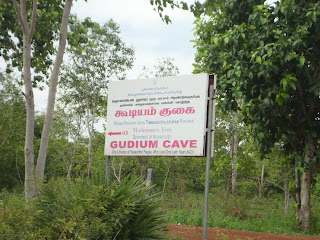 Gudiyam Caves--Cavern to prehistoric Times
Gudiyam Caves--Cavern to prehistoric TimesLocality:Gudiyam
Landmark:Poondi reservoir
Type:Adventurous Trip
Google map location:
A 90-kilometer drive from Chennai to Gudiyam village past Poondi a road less traveled brings you to an inaccessible forest of evergreen and deciduous trees .This is where Robert Bruce Foote in 1863, a British geologist, discovered a stone tool - a hand axe, made, used and discarded by the Stone Age man - from a gravel pit in suburban in this place . The discovery, small but momentous, opened up an entire new area of research about the Paleolithic Age in the Tamilnadu region, and pushed back the antiquity of the Tamil man by 1,00,000 years.
We planned on Friday for the trek to this mystic place .On Saturday 9:15 am we 5 started in Ritz car and reached Gudiyam around 10:45am.On the way we took photos of the Poondi reservoir.The place was not polluted after long time I could feel silence and breathe fresh air.

The Gudiyam village is located at 11 km drive from Poondi reservoir.The road is not well maintained but adjustable .You need to consult the locals to find the way through.Most of the people are aware of the caves(kugai in Tamil).Mention kugai(caves) for them to guide you .
Take the road to Nambakkam to reach Goonipalyam. Right direction as shown in the photo.

If you traveling by car then you can park the vehicle at the end of the cement road ,there begins the forest .Jeeps and all terrain vehicle can go 400 meter more ,there is ample space for parking offer a biscuit packet to locals boys they can take care of your vehicle.I feel it is safe to stop the vehicle at the cement road to avoid any puncture.The invisible bike with luck of not being punctured and gutsy heart can go 3 km more inside the terrain.
The adventure begins,The locals in the last village will help you in showing the starting point . The trek for 7 km inside the lonely forest is all yours expect for the few stones painted in white act as route markers. The path for the first few km is big and easy to walk,On approaching near the mountain the pathway is full of pebbles and rocks.Follow the pathway ,dont divert as it is very difficult to trace back the route.Please wear shoes to avoid any ankle twists.
First cave

The walk is around 4 km then you would see the first cave.The right diversion from the pathway lead you to the steps for the first cave . On reaching the first cave you we amazed to see the big rock formation.We reached the cave around 1:30pm and had our lunch (2 slices of bread with Jam).Please clean the place after having your lunch and don't pollute the place with plastic bags.
View Inside the first cave

We could see a path leading upwards near to cave ,we decided to take the path ,the route is slightly steep and full of pebbles(please proceed with caution),Within few meters of walk you can reach the top of the mountain .The view from the top is spectacular and gives the complete map of the area. You will surrounded by greenery,it is worth to take photos.It would be like you are in the center of the forest.The feeling of standing in top of the hill is great. It is easy to climb up but be very cautious while getting down is difficult from the hills as the pebbles are slippery ,avoid if it rains.
From the top of the hill

Then after ample rest we got down from the first cave and proceeded further for another 3 km.The path get narrower and covered with thick bushes .
Second Cave

On nearing the Second cave we could hear the sound of parrots and other birds. The view of this cave was spectacular,The entrance looks like a giant toadstool that has keeled over. And in contrast to the sun-drenched exterior, it is cool within .Look up at the ceiling I bet you will be awed at the sight ofmassive beehives clinging to the porous & damp roof of the cave.The foul smell of bat can be sensed.

There resides a Amman temple within the cave worshiped by locals.. A kindly Amman deity sits in a framed photo, as other deities and their war-worn steeds stand impressively by. Colorful pieces of cloth are strung on a tall plant. The primordial silence is shattered only by the humming of bees and the querulous twitter of birds.We also spotted a snake skin inside the cave.

After taking lot of photos inside the cave we decided to walk back.Thisjourney was a cavern to the past and away from mechanical,polluted life in Chennai.The walk of 7km was deserving and adventurous.
We walked after on the way back and reached the car at 3:40 am and had our snacks at Akshaya Bhavan in Thiruvallur.The food was tasty and the place was well maintained.
Important Note
- Shoes is compulsory as the pathway is rugged.
- Carry lots of Water (2ltr per person).
- Buy Food for the travel in Thiruvallur.
- No human contact for the 7 km trek
- Avoid plastic bags
- Avoid climbing up the hill during rains.
- Don't disturb the beehive it may prove disastrous
Subscribe to:
Posts (Atom)








